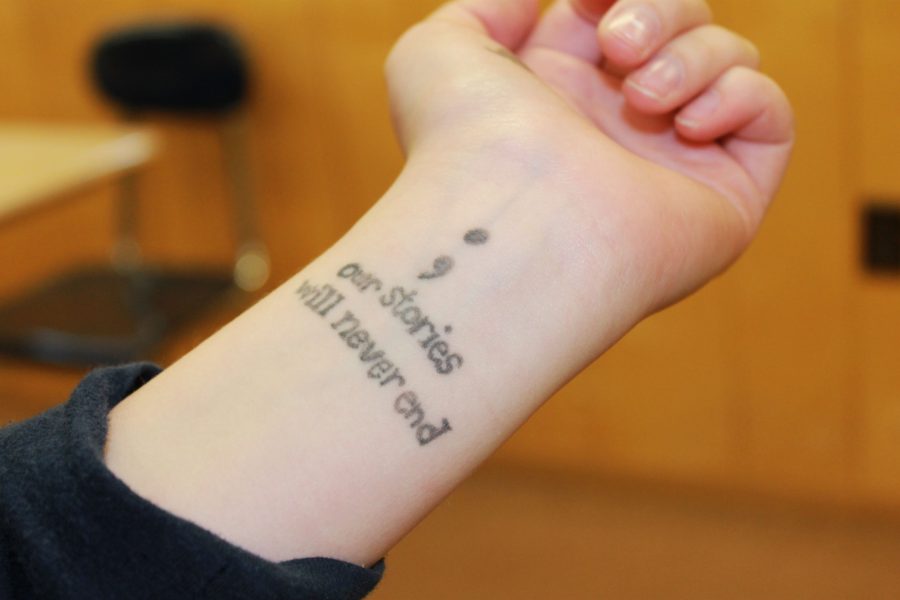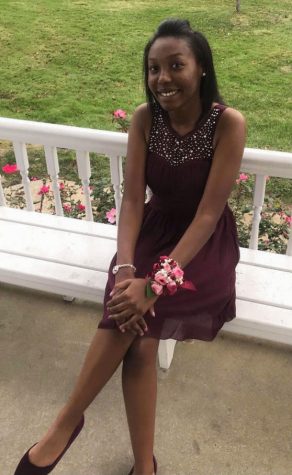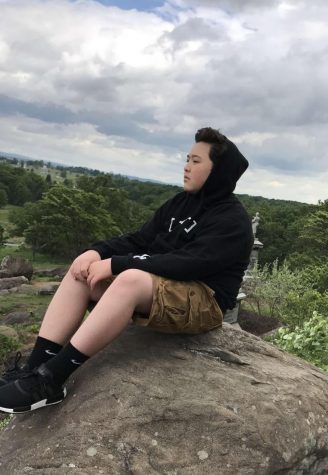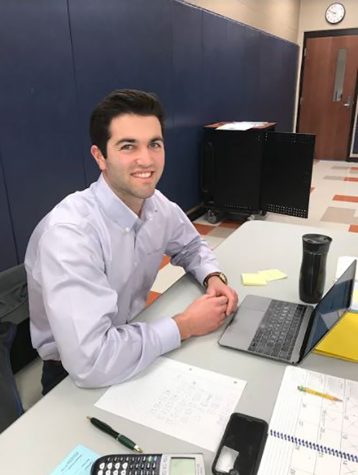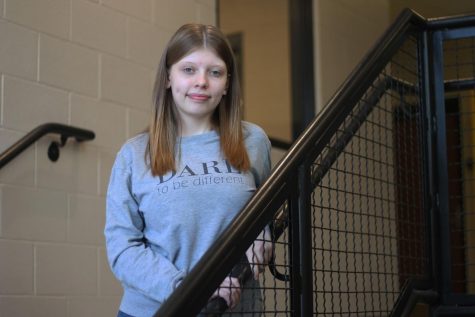“Our stories will never end”
There is no ending, only a new beginning
On sophomore Kyrsten Ward’s left wrist is a tattoo of a semicolon, and below it, the quote: “Our stories will never end.”
It serves as a representation of her life and what she has gone through; she said it is a reminder to keep going and a way to keep her grounded.
“A semicolon is used when you don’t want to end a sentence,” Ward said. “It’s basically a metaphor for life; you continue even though you want to end [it].”
The official name for the movement is Project Semicolon. It is a non-profit organization whose purpose is to spread awareness with this message: “Your story is not over.”
By generating awareness and involvement with semicolon tattoos, the organization hopes to provide support for individuals who are suffering from mental illness, suicide, addiction and self-injury.
Ward was diagnosed with Generalized Anxiety Disorder (GAD), Obsessive Compulsive Disorder (OCD) and clinical depression. She said she was diagnosed when she was about 11 or 12 and cannot remember a time before it. Her situation was not caused by anything, she added, but events that transpired after may have progressed the mental illness.
“I’ve had a pretty good life,” she said. “…I think it can happen to anyone. It just happened to me.”
Senior Charlie Grager also has a semi-colon tattoo, on the bend of his elbow. While visiting tattoo and piercing shops he heard about the semicolon project and its meaning.
Grager said he grew up battling depression and bipolar disorder, as did his father and brother. When they offered to get tattoos together, he decided to join them.
“[Mental illnesses] are straining,” he said. “It’s just something that you know is there, and it has to be dealt with, but there’s nothing you can really do about it, so it’s like weight on your back.”
Junior Maddy Hall has also dealt with mental illness. Due to her mother’s medical issues and father’s deployment when she was young, Hall was diagnosed with Post Traumatic Stress Disorder (PTSD), Generalized Anxiety Disorder (GAD), and clinical depression.
Hall now considers herself an avid mental health advocate.
She volunteers with Townhall II’s Teen Team, a program that educates its volunteers about various subjects relating to mental health.
Hall said she plans to major in a psychology-related field, like neuroscience. She has always found psychology interesting, she said, and wants to make life better for individuals who suffer from mental illnesses.
Mental health is a newer concept, Hall explained, and people are wary of it.
“There could be more we could do,” she said, “but I think for the most part, our school does a good job [educating].”
To inform students about mental well being, health teacher Chris Scisciani uses chapters from the class textbook, Glencoe Health. Additionally, guest speakers discuss mental well-being, suicide, depression, risks and help with students.
Scisciani said he works with the guidance counselors when case issues arise when students learn about mental illnesses.
Guidance counselor Kelly Simmons said the view of mental illness is changing, and instead of society believing it is a choice, it is now understood as something an individual cannot control. It can be caused by environmental factors or a chemical imbalance, she explained.
Besides a chemical imbalance, people may experience something in their environments that make them predisposed to mental illness. For example, an individual could have had a death in his family or a divorce between her parents; these factors could have a major effect on how a student conducts her daily life.
Simmons said her counseling method stems from the thought that people should see others for who they are — not what they suffer from, or for their mental illness.
Over the years, Simmons said, she learned people have their own reactions to — and ways of dealing with — situations. One of the great things about her job, she said, is seeing the development of students as they overcome their situations.
“You want to treat everybody as an individual,” Simmons said. “I think that’s true for people in education. I think that’s one of the reasons people go into it. You want to help people; you want to touch people’s lives.”
Artwork was made for this article. Click here to view it.
Your donation will support the student journalists of Streetsboro High School. Your contribution will allow us to purchase equipment and cover our annual website hosting costs.


